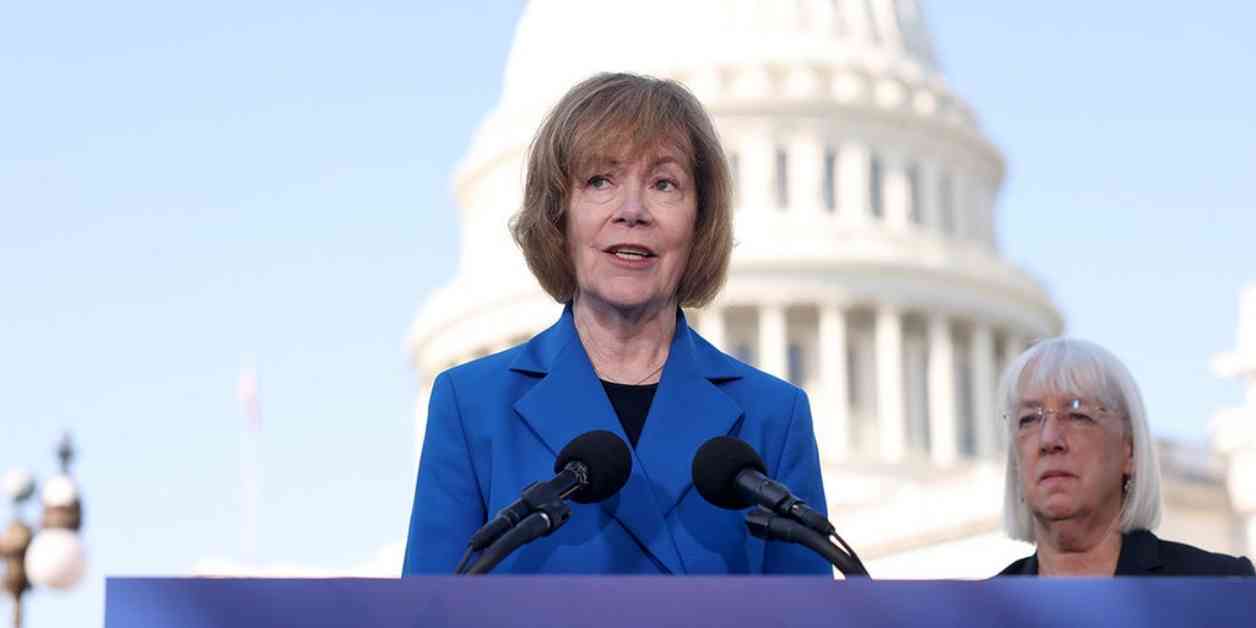Sen. Tina Smith of Minnesota announced her decision not to seek re-election in 2026, casting a spotlight on the upcoming midterm elections and the Democratic Party’s quest to regain Senate control. In a heartfelt social media post, Smith expressed gratitude for the opportunity to serve Minnesotans and the nation, concluding her term with a promise to work diligently until the end.
Smith’s tenure in the Senate began in 2018 when she assumed the position vacated by former Sen. Al Franken. Following a special election and subsequent re-election, she solidified her presence in Minnesota’s political landscape. As news of her departure reverberates, the Democratic Party faces the challenge of maintaining its foothold in a crucial battleground state.
Republican Rivalry and Democratic Determination
As the political arena heats up, Senate Republicans have set their sights on flipping Smith’s seat in traditionally Democrat-leaning Minnesota. National Republican Senatorial Committee Chair Sen. Tim Scott emphasized the need for a senator who prioritizes tax reduction, economic growth, and community safety. Despite the GOP’s optimism, the Democratic Senatorial Campaign Committee remains steadfast in its commitment to retaining the Senate position.
Senate Minority Leader Chuck Schumer lauded Smith’s contributions, highlighting her intelligence, compassion, and unwavering dedication to public service. Acknowledging the impending loss, Schumer expressed confidence in the party’s ability to preserve the seat’s Democratic status. With Smith’s departure, Minnesota’s political landscape stands poised for transformation, inviting a fresh wave of contenders to vie for the coveted position.
Shifting Dynamics and Strategic Maneuvers
The 2026 midterms promise a dynamic electoral landscape, with both parties strategizing to secure pivotal Senate seats. Following significant gains in the 2024 cycle, Senate Republicans are poised to maintain their momentum, focusing on critical races across the nation. Democrats, meanwhile, are gearing up for an offensive in strategic states, aiming to strengthen their Senate presence and shape legislative outcomes.
In light of Smith’s decision, Minnesota Governor Tim Walz reflected on her legacy of advocacy and service. Walz’s acknowledgment of Smith’s accomplishments underscores the profound impact of her tenure, setting the stage for a new chapter in the state’s political narrative. Amid speculation about potential successors, including Lt. Gov Peggy Flanagan and Rep. Ilhan Omar, the race for Smith’s vacant seat intensifies, drawing attention to the diverse array of candidates poised to emerge.
With the Cook Report rating Minnesota as “Likely Democrat,” the stage is set for a high-stakes electoral showdown. As the state prepares for a political transition, Minnesotans stand at a crossroads, poised to shape the future trajectory of their representation. The upcoming Senate race holds the promise of transformative change, inviting voters to engage in a robust democratic process that will define the state’s political landscape for years to come.
Paul Steinhauser, a seasoned politics reporter based in New Hampshire, captures the essence of Minnesota’s unfolding political drama, shedding light on the intricate dynamics that shape the state’s electoral landscape. As candidates gear up for a competitive race, the Senate seat once held by Sen. Tina Smith emerges as a focal point of national attention, symbolizing the enduring legacy of public service and the vibrant spirit of democratic engagement.

